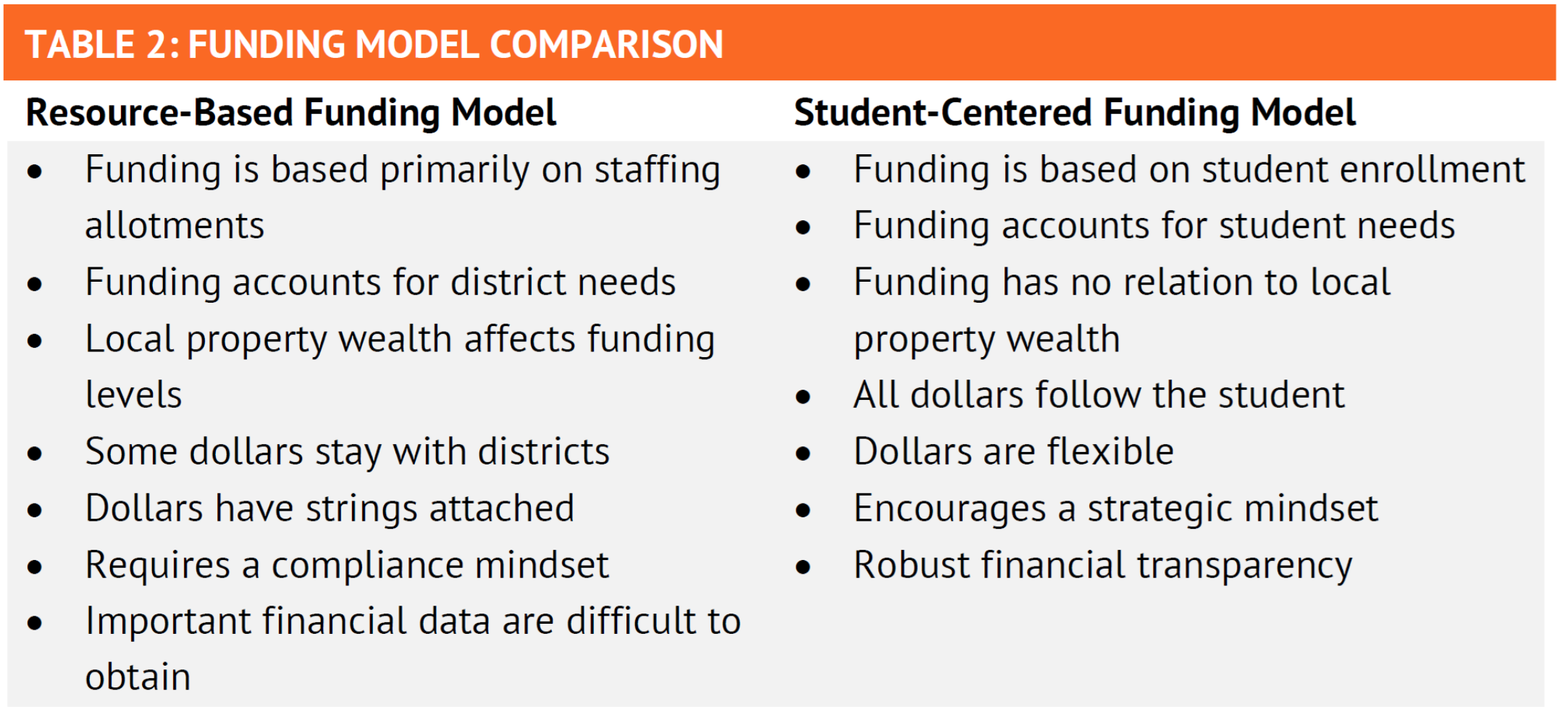Idaho is one of only a handful of states that employs a resource-based formula to allocate education dollars. This approach, which doles out education funding based largely on staffing positions and other inputs, has fundamental flaws that must be addressed. With the economic downturn caused by COVID-19 straining state coffers, it’s becoming increasingly critical to maximize every dollar and policymakers can do this by adopting a student-centered school finance system that puts families and educators in the driver’s seat.
This policy brief provides a brief overview of Idaho’s school finance system, highlights its primary shortcomings, and makes several recommendations for reform.
Our analysis finds two primary issues that policymakers must address:
- Lack of flexibility and local discretion: We estimate that about 65 percent of operating dollars have limited or no flexibility in how they’re used.
- Unfair and arbitrary funding patterns: We estimate that only 2.4 percent of operating dollars are allocated based on students.
To address these problems with Idaho’s school finance system, policymakers should move away from its antiquated resource-based model by adopting student-centered funding, which has several key advantages as outlined below in Table 2.
We provide three key recommendations for reform that move Idaho toward a student-centered funding model:
- Streamline education dollars into a weighted student funding formula that allocates dollars based on student characteristics. For Idaho, this is the most critical component of funding reform.
- Equalize local operations dollars.
- Be strategic about any further K-12 budget reductions.
Recommendations Explained
1. Streamline Education Dollars Into a Weighted Student Funding Formula
Idaho should overhaul its education funding formula so that it provides a foundational dollar amount that is the same for all students, with per-pupil weights that adjust funding based on student needs. Ideally, this formula would streamline operating revenue streams, including most categorical funds, into one coherent formula. Importantly, this means ensuring that funding levels are no longer based on factors such as staff experience or school district size. While there isn’t one right way to structure a weighted student formula (WSF), policymakers can customize a formula to their students’ needs by applying the following principles.
Keep it simple: Generally, it is best to employ a straightforward formula that avoids overlap among categories. Most dollars should flow through the foundational allotment, and Idaho should move away from using average daily attendance to count students.
Don’t attach strings: Education dollars should be delivered as unrestricted revenue so that school district leaders are empowered to make spending decisions.
Be strategic: Weighted student categories should be selected based on Idaho’s unique needs, accounting for things such as student demographics and current performance levels.
Consider all funding: Policymakers should aim to allocate all or nearly all dollars through a weighted student formula.
Policymakers in Idaho can learn from California’s experience with transitioning to a new funding system. In 2013, California modernized its school finance system by streamlining more than 30 categorical grants into a simple weighted student formula that bases funding on individual students.
Several studies have examined the effects of California’s school finance overhaul, and the results are largely positive. In a survey of superintendents, 82 percent agreed that it is leading to greater alignment among goals, strategies, and resource allocation decisions, and 74 percent indicated that the financial flexibility enabled their district to match spending with local needs. Importantly, weighted student funding has improved funding equity, and there’s evidence that it has prompted cultural shifts within school districts.
2. Equalize Local Operations Dollars
The biggest driver of funding disparities across different Idaho school districts is local levies. When looking at levies for operations, there is a clear and strong relationship between a school district’s property wealth and the amount of local funds it raises. Ultimately, this means wealthier districts have more funds per pupil to hire additional staff, pay higher salaries, and fund more programs. To address this inequity, Idaho can take a variety of approaches to minimize these disparities.
3. Be Strategic With Any Further Budget Cuts
If additional budget cuts beyond the recent 5 percent holdback are necessary before Idaho transitions to a new formula, then policymakers must pay close attention to how these reductions are made. This is especially critical given the rigid nature of the current resource-based system and observed spending differences caused by local dollars. These factors, among others, should be considered, and policymakers should seek to maintain or increase the flexible portion of education funding to give local leaders maximum discretion over how to adjust to the shifting fiscal realities.
Full Policy Brief: Modernizing School Finance in Idaho
Infographic — Idaho School Finance: How It Works and How to Improve It




